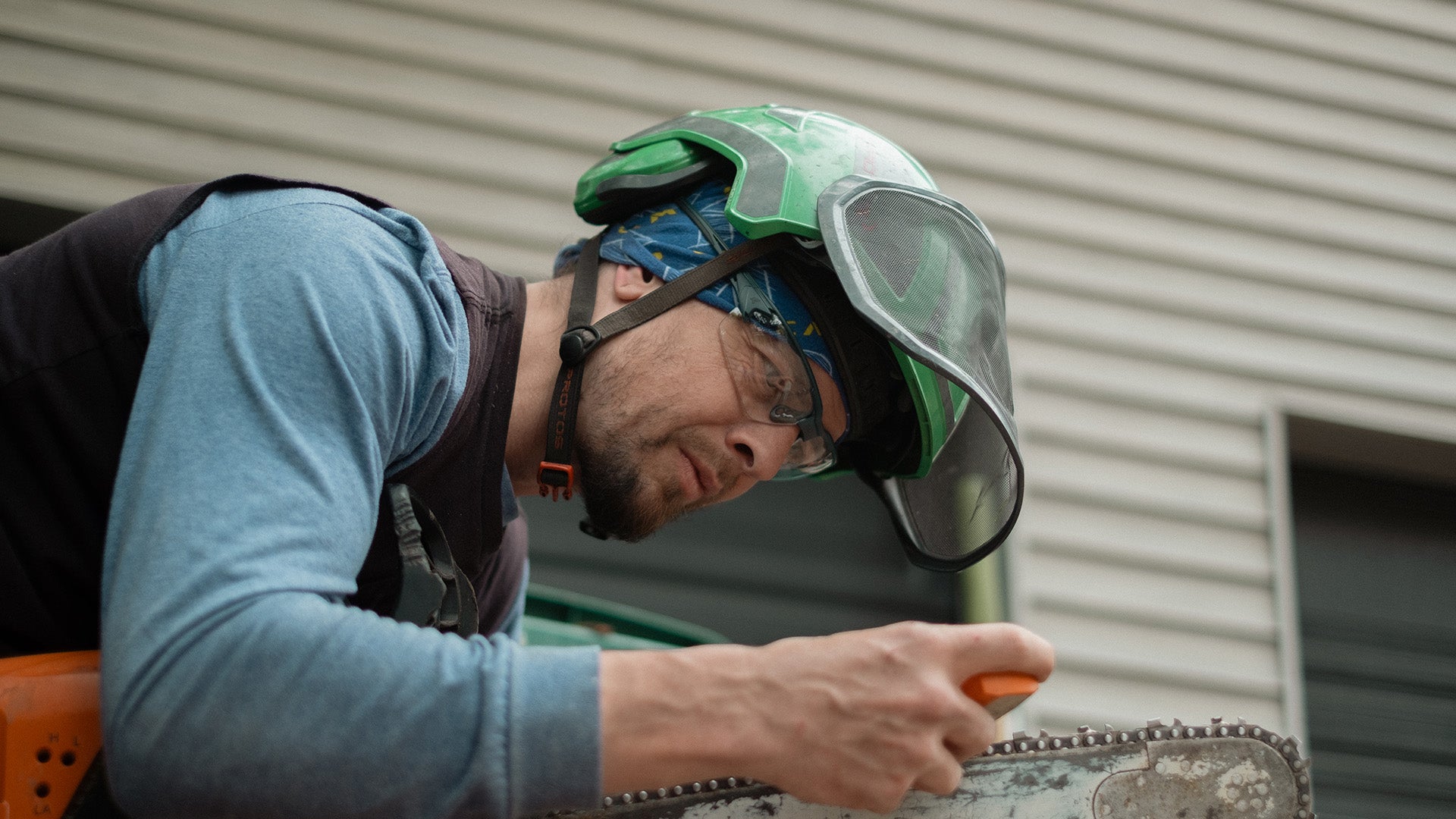Safety glasses can keep your eyes protected from flying projectiles and common airborne hazards. Whether you’re at work or tackling your home project, you should always wear ANSI-approved eyewear marked with “Z87” or “Z87+” to protect your eyes.
The impact-absorbing quality of Z87-rated lenses comes from the material they’re made of—polycarbonate. Unlike other materials, polycarbonate is lightweight, impact resistant and naturally blocks UVA, UVB and UVC radiation.
So, while the lenses of safety glasses are made from a polycarbonate base, there are many different tints and technologies applied to the surface of the lens to block bright light or otherwise enhance your environment.
Here’s a quick resource to help you choose the best lenses for your next project. Next to each lens choice, we’ve also included the percentage of light transmission each lens offers.
Lenses for Indoor Environments
Clear – 85% light transmission
The classic lens option for safety glasses. Clear is great for indoor and low-light work. Plus, since polycarbonate naturally blocks UVA, UVB and UVC radiation you’ll still have protection from these harmful rays. However, don’t mistake protection from UV radiation with the eye shading ability that tinted or polarized lenses will offer. Check out one of our clear-lens best-sellers here.
Anti-Reflective – 50% light transmission
Anti-reflective safety glass lenses are a good choice for many indoor and outdoor conditions. The light silver mirror coating reflects excess light and cuts glare. View one of Edge's anti-reflective safety glasses here.
Yellow – 80% light transmission
Yellow safety glass lenses can increase depth perception and contrast during dawn or dusk activities. They can make dull, overcast conditions appear brighter. They also filter low levels of blue light. Check out one of our popular yellow lens options here.
Light Blue – 69% light transmission
Light blue safety glass lenses can help decrease eye fatigue resulting from yellow light. They are a good choice for indoor settings with yellow incandescent, yellow florescent or sodium vapor lighting.
Lenses for Outdoor Environments
Smoke – 16% light transmission
The ideal “all-around” bright condition safety glass lens. This color blocks sun rays without causing color distortion.
Amber – 57% light transmission
Amber safety glass lenses make dull light conditions appear brighter and filter low levels of blue light. They can increase depth perception and clarity in situations with flat light or minimal contrast.
Copper – 8% light transmission
Copper safety glass lenses make outdoor conditions appear sharper by filtering blue light. They can increase depth perception and contrast, making it the ideal tint for daytime driving. We often call our copper tint “copper” lenses in our marketing materials because of their ability to improve visibility while driving.
Silver Mirror – 13% light transmission
Silver mirror safety glass lenses decrease visible brightness while maintaining true-to-life color. A silver-colored mirror coating adds a reflective layer to the light-filtering properties of a smoke base tint.
Blue Mirror – 12% light transmission
Blue mirror lenses decrease visible brightness in intense conditions. A blue-colored mirror coating adds a highly reflective layer to the light blocking ability of a smoke base tint.
Aqua Precision Red Mirror – 13% light transmission
Aqua precision red mirror safety glass lenses maximize visual clarity and contrast in bright light conditions. Rather than using a layering process, anti-reflective ions are infused into a flame-colored mirror to maintain pristine optics.
Polarized Lenses
Polarized Copper – 8% light transmission
Like regular copper tinted lenses, polarized copper lenses make outdoor conditions appear sharper. They are a fantastic choice for use as driving lenses. But the addition of polarized technology makes polarized copper lenses more capable of reducing glare.
Polarized Smoke – 14% light transmission
Polarized smoke safety glass lenses offer all-around eye shading for bright, outdoor conditions. This type of lens tint blocks sunlight without causing color distortion. Polarized technology reduces glare.
Polarized G-15 Silver Mirror – 11% light transmission
Polarized G-15 silver mirror safety glass lenses maximize transmission of green and yellow light for true-to-life color reproduction. The result is reduced eyestrain and a noticeable cooling sensation on the eyes. Of course, polarized technology reduces glare in bright sunlit conditions.
Polarized Aqua Precision Blue Mirror – 10% light transmission
Polarized Aqua Precision blue mirror safety glass lenses maximize visual clarity and contrast in bright light conditions. Rather than using a layering process, anti-reflective ions are infused into a blue-colored mirror to reflect light. The addition of polarized technology reduces glare in sunlit conditions.
Shop our selection of polarized safety glasses here.
Use this guide to help you select the most appropriate lenses for your environment. After all, the best way to be protected by safety glasses is to wear them. So, choose the lens that enables you to excel in any condition. And if you’re struggling with fogging lenses, don’t forget that we offer our Vapor Shield proprietary anti-fog technology in several of these lens tint options.




